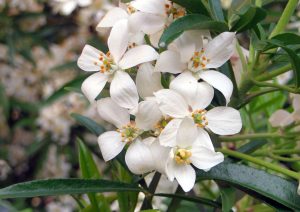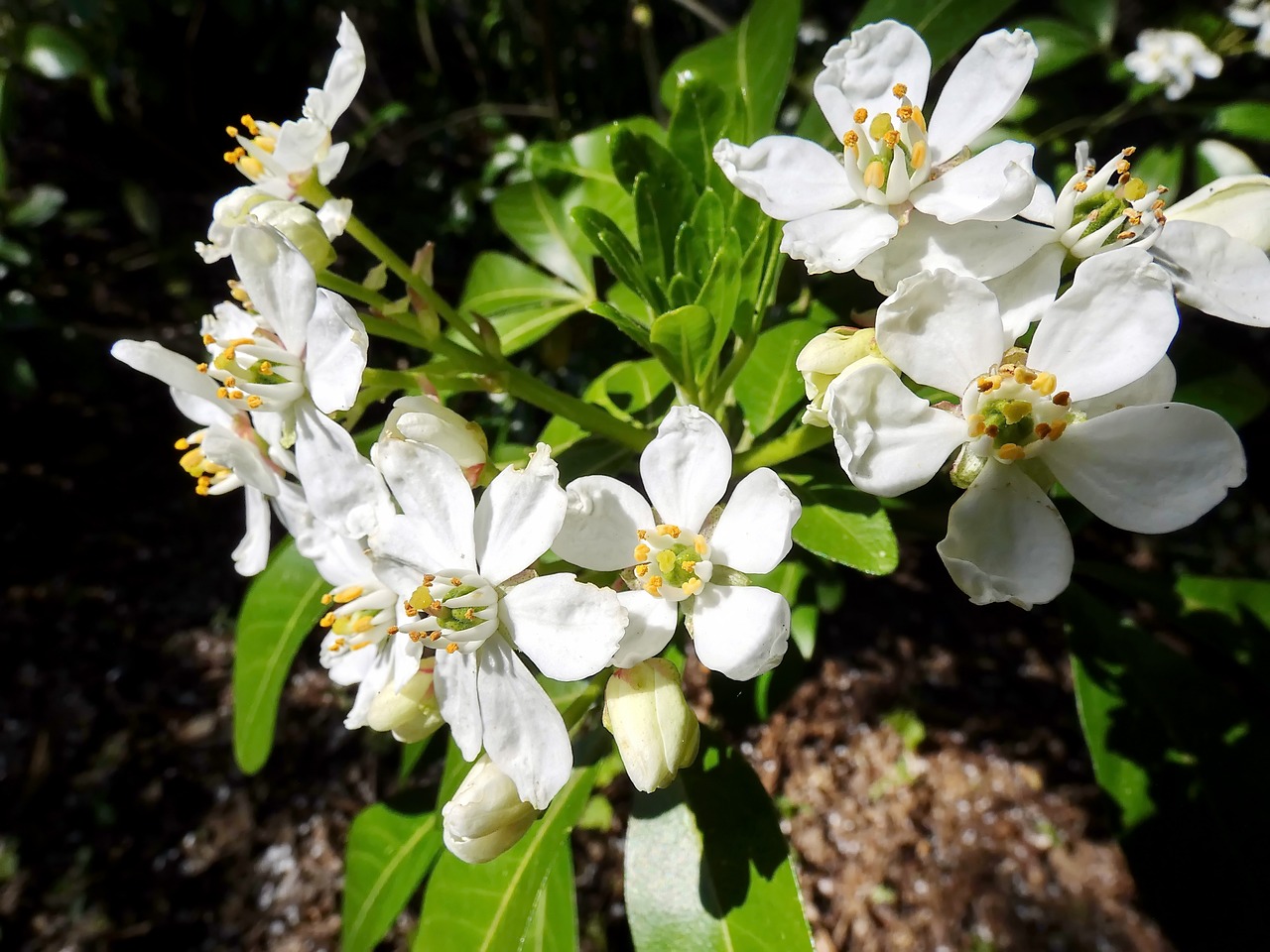Last Updated on April 12, 2024 by Real Men Sow
Mexican Orange Blossom (Choisya Ternata) is grown for its beautiful masses of flowers in late April-late May, but also because of their delicate yellow-to-lime green foliage. Although the c is evergreen, it looks best between March and November. Growing choisya plants can take a while, however, it is very resistant to pests and diseases.
Things You Should Know Before Growing Choisya Ternata

- They thrive in full sunlight, but they can also grow in semi-shade.
- Grown in most parts of the UK, but they are only partially frost-tolerant to temperatures below -3°C/26°F.
- Although they don’t have a preference for soil type, they won’t grow in very acidic or alkaline soils.
- Can tolerate drought, especially when they are grown on the open ground. They retain moisture well and their leaves are leathery.
- Tolerates neglect well, mainly because they have low nutrient needs and can grow without any pruning.
- They produce white flowers with a citrus fragrance.
- You can grow them in containers, the open ground, or as low-hedging hedges.
- Other than occasional damage caused by slugs or rabbits, pests are not an issue
- The average height and width of the plant is 1.8m (5ft), but it can grow up to 2.5m (8ft) if given the right conditions.
How To Plant Choisya Ternata
The shrub should be planted in full sun to slightly shaded locations. Add lots of compost to the soil if it is too heavy or not draining well.
You can plant it all year long as long as the soil isn’t frozen and that you water well when the conditions are dry. The best time to plant this shrub is between March and April and September to October. Natural rainfall will suffice to allow them to grow well. Dig a hole twice as wide as the root ball. Add a few drops of blood, fish, and bone to the hole and then work it into the ground.
Fill the hole with soil to the same depth as the pot. Firmly but gently fill the hole around the root ball. To settle the soil around the root ball, water well.
Taking Care of Choisya Ternata
Choisyas all require the same care, which is almost no hassle once they have been established. Choisyas are best planted in the right spot which is a location that is as sunny as possible, but also protects it from strong winds.
Choisyas can withstand frost up to -3°C/26°F, but they will be able to withstand winds and stay a few degrees lower.
You can improve the soil by adding well-rotted compost to it. Give them enough room to grow up to 1.8m (5ft). They will take care of themselves if they are watered well.
They can be helped by weeding around their base. However, once they are established, most weeds that grow under them will be smothered. They can be trimmed to form dense, mound-shaped shrubs. A mulch made from well-rotted compost or grass clippings in April can help conserve water throughout the year as well as provide nutrients. The best time to prune them to maintain their shape and size is after the flowers have stopped, usually in mid-June.
Moving Choisya
Choisyas can be moved by shrubs quite easily, but it takes planning if they’re large.
Even easy-to-move shrubs like Choisya can be problematic because the roots may get damaged when the shrub is being lifted up. The roots might not be able to extract enough water to support their top growth if there is too much damage.
When To Prune Choisya
Choisya can be pruned in June and moved in the autumn. This will decrease the amount of top growth that the roots require to support it. Mid June is the best time to prune Choisya. Although some flowers may still be visible, the initial bursts of colour will have faded. You can trim the plant to half its original size. While you’re doing this, take a look at the center of the shrub to remove any older stems. You will notice a lot of new growth. Leave that alone.
Sprinkle two to three handfuls of bone, fish and blood fertiliser on the soil. This will allow the shrub to recover as quickly as possible from pruning.
The ideal time to move your Choisya is in the middle of September or early autumn. Pick a day when it is raining. They are only partly frost-hardy so make sure to choose a sunny, protected spot. You should remove as much of the root ball as possible from the shrub. Now you will have an idea of how big the hole should be in the new location.
The new hole should be slightly bigger than the rootball. Place the Choisya into the hole at the same depth it was before. Dug soil should be used to fill in the area around the rootball. Firm it with your feet. The shrub should be watered regularly. Choisya root balls aren’t particularly large.
Growing Choisya in Containers
Although Choisyas can grow in containers, they will need to be cared for in winter. Potted plants are more vulnerable to frost damage than those grown in the ground. Place your potted Choisya outside, in an open garage or on a protected spot up against the house in winter. You can temporarily move them into a garage if it is really cold. Although it isn’t ideal, the lack of sunlight will not have any visible effects if it is limited to a few days.
Choisyas can also be grown in pots. This includes the size of both the container and the shrub. Because large containers need less watering, the better for both you and your plants. Choisya dewitteana “White Dazzler” is a slower-growing variety that we recommend when choosing a Choisya to use as a container. This variety will need less pruning to maintain its size than other varieties.
Use a 40cm (16in) container to plant in normal multi-purpose compost. Remember that the bigger the container, the better it is. Container-grown plants can dry out quickly in hot weather. They may require watering twice a week in extremely warm conditions. Each month, a handful of bone, fish, and blood fertiliser will be sufficient to provide nutrients for healthy plants.
Like all plants that are grown in pots and containers, you will need to water them frequently, especially during hot weather. Choisyas can withstand drought, but they do have their limitations! Rainwater is more potent than tap water.
Pest and Diseases When Growing Choisya
Choisya plants are almost completely immune to disease and pests. Any problems with the growth of the leaves can be attributed to cold weather. Most cases, the plant will recover fully in spring.
Sometimes, snails can attack the bark or foliage. In these cases, you can sprinkle snail pellets or slug bait around. Sprinkle dry, multipurpose compost around plants’ bases. Snails hate this because it quickly dries out their slime and stops them from moving.

